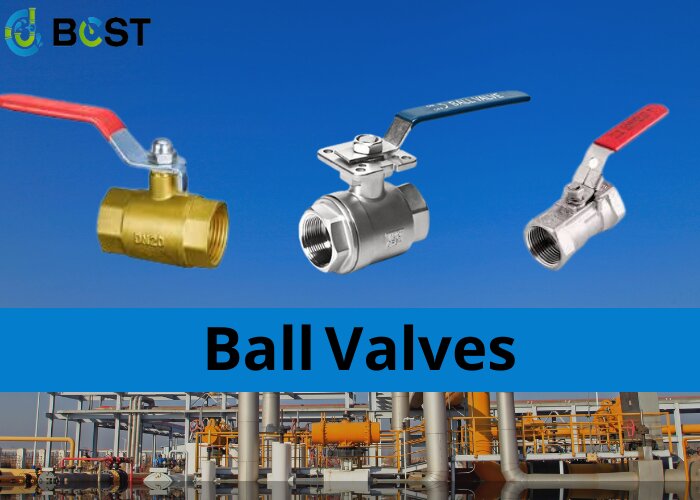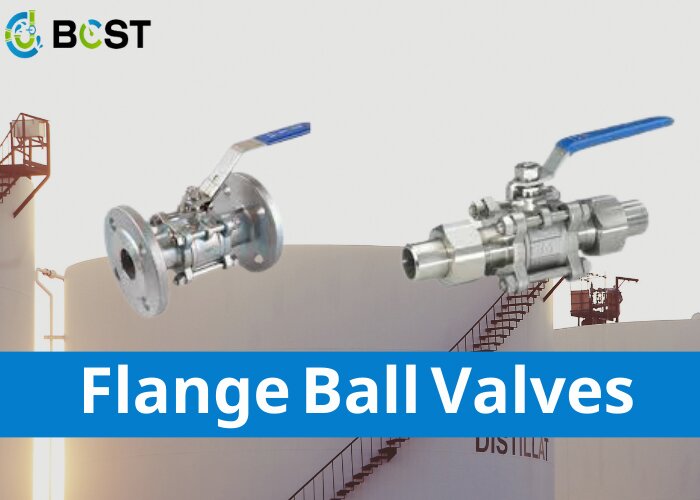
Ball valves have long been popular in fluid control systems. Due to their simplicity and reliability. However, like any mechanical component, ball valves are not immune to issues and failures. Exploring alternatives to maintain efficient operations and prevent disruptions is essential.
This blog delves into common ball valve problems. And investigates the substitutes and alternatives available. Providing valuable insights for fluid control in various applications.
What Is a Ball Valve?
A ball valve is a flow control device. A pivoting ball controls the flow of fluids and gases through the valve. The ball has a hole or bore in its center. When aligned with the valve’s inlet and outflow ports, the ball permits fluid to pass through the valve. Rotating the ball by 90 degrees closes the valve, blocking the fluid flow.
Industrial and commercial applications use ball valves. They are durable and reliable. They offer precise control. Designed to suit different applications. They run manually or automatically.The application determines whether the lever is toggled by hand. or whether to rely on the ball valve actuator.The oil and gas industry uses ball valves. It is also used in the chemical, water treatment, and power generation industries.

Common Ball Valve Issues
Ball valves, as previously said, are long-lasting and dependable. They withstand high pressures and temperatures.
Ball valves, like any mechanical equipment, can develop issues over time. Here are some of the most typical problems you may face:
Clogging
Particles or debris in the fluid or gas can accumulate in the valve and cause clogging. Clogging can cause lower flow rates or even total obstruction.
If you don’t maintain them, ball valves can become clogged due to scale, sediment, or debris buildup.
Leaking
Wear and tear or corrosion cause ball valves to leak. Another reason for ball valve leakage is improper installation.
Seizing
If the ball or stem becomes jammed, the ball valve will seize. This prevents the valve from turning. A valve might seize due to wear and tear, dust and debris buildup, corrosion, or misalignment.
Corrosion
Ball valves can corrode due to exposure to harsh chemicals or environmental factors. Corrosion can degrade the construction of the valve. Resulting in leakage or failure. Moisture and salt water cause corrosion.
Pressure Drops
Depending on the application and specific valve design, pressure drops can sometimes be a problem for ball valves. Pressure drops can degrade system performance. And increase energy expenditures.
Solutions to Ball Valve Issues
The good news is that many ball valve issues have straightforward fixes. Here are a few:
Leaking
Try tightening your connections. You could have a faulty seal or O-ring. In that case, you’ll need to replace the damaged components.
Seizing
You may salvage a seized ball valve by lubricating the ball or stem. Cleaning the valve may help. If neither solution works, you may need to replace the ball valve.
Corrosion
To prevent corrosion, choose materials resistant to chemicals and environmental factors. Replace the valve with a new one made of more durable materials if it has deteriorated.
Blockage
Use filters or strainers in the piping system to catch material before it enters the valve to prevent clogging. Once the valve clogs, you must remove and clean it.
Pressure drops
To prevent pressure drops, choose the correct valve for your application. Size matters. An undersized valve can result in a significant pressure drop, whilst an oversized valve might generate flow turbulence.
A solid preventative maintenance program reduces problems. Routine maintenance is critical. To extend the life of the ball valves used in your operation.
Impact of Ball Valve Issues
A faulty ball valve can have serious consequences. How much of an impact depends on the damage’s severity and the valve’s application.
If a damaged ball valve is not detected and repaired soon, it can cause several issues, including:
§ Downtime
§ Safety hazards
§ Increased operating costs
§ Environmental concerns
Regular inspection and maintenance are vital. Help ensure ball valves are working correctly. Repairing or replacing broken valves saves your company money by avoiding costly downtime.
Are There Ball Valve Alternatives?
Depending on the application and requirements, you can use a ball valve alternative. Some of the most common ball valve substitutes are:
These valves have a flat rate that moves up and down to control fluid flow. A gate valve may work if an application requires a tight shutoff.
Butterfly valves use a rotating disc to control the flow of fluid.Does your application require fast startups and low pressure drops ? If so, a butterfly valve can work as an alternative.
To control the flow. These valves employ a disk that moves perpendicular to the fluid flow. They work on applications that require precise control and regulation of flow.
Needle Valves
Needle valves control fluid flow by means of a long, tapered stem.Needle valves are suitable for applications requiring fine flow control.
This isn’t a comprehensive list of ball valve alternatives—you may use other substitutes. The fluid, pressure, temperature, and needed flow rate all assist you in selecting which valve is best for your application.
While ball valves are known for their durability. They can experience wear and issues as they age. Enhancing your valve maintenance regimen is advisable to prevent such problems.
If you’re currently seeking a replacement ball valve, the BCST team, with over 20 years of industry expertise, can provide top-quality valve products.
Feel free to contact us today. We are happy to help you out! Email us to request a price quote.







